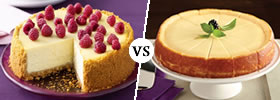Difference between Bamboo and Wood
Key difference: The term ‘wood’ is used to refer to the trees, specifically it refers to the substance that trees are made out of. Wood is the hard, fibrous structural tissue that is commonly found in the stems and roots of the trees. It is a natural composite of cellulose fibers. Bamboo, on the other hand, is essentially a grass in the Poaceae family of grass. There are hundreds of species of bamboos; however, most bamboo timber is sourced from the Phyllostachys and Bambusa genera.

Dictionary.com defines ‘wood’ as
- The hard, fibrous substance composing most of the stem and branches of a tree or shrub, and lying beneath the bark; the xylem.
- The trunks or main stems of trees as suitable for architectural and other purposes; timber or lumber.
Essentially, the term ‘wood’ is used to refer to the trees, specifically it refers to the substance that trees are made out of. Wood is the hard, fibrous structural tissue that is commonly found in the stems and roots of the trees. It is a natural composite of cellulose fibers. These fibers are strong in tension and are embedded in a matrix of lignin, due to which the wood is able to resist compression.
Wood plays numerous roles in the anatomy of the tree. It primary function is to provide support to the tree, in order to enable it to remain straight and grow upward in height. The height is important for the tree as the higher it is, the closer to the sun it gets and the leaves are then able to absorb the sunlight and use it in the process of photosynthesis. Hence, the wood’s support function relates directly to the tree’s ability to acquire food and hence survive. Furthermore, the wood also mediates the transfer of water and nutrients to the leaves and other growing tissues. Again, this is essential for the tree in order to survive.
In addition to the above mentioned, the term ‘wood’ is also used to refer to other plant materials that are similar in nature to the ‘hard, fibrous structural tissue.’ It may also refer to materials that are engineered or created from wood, wood chips or fiber. This may include ‘wooden furniture,’ ‘wooden houses,’ ‘wooden toys,’ etc.
 Bamboo, on the other hand, is essentially a grass in the Poaceae family of grass. There are hundreds of species of bamboos; however, most bamboo timber is sourced from the Phyllostachys and Bambusa genera. Most bamboo species are native to South Asia, Southeast Asia and East Asia.
Bamboo, on the other hand, is essentially a grass in the Poaceae family of grass. There are hundreds of species of bamboos; however, most bamboo timber is sourced from the Phyllostachys and Bambusa genera. Most bamboo species are native to South Asia, Southeast Asia and East Asia.
An advantage of bamboos is that they practically grow up in 3 to 6 years, whereas trees may take up to 20 years to 70 years. Hence, bamboo is touted as being more environmentally friendly, as opposed to traditional woods.
However, a disadvantage of bamboo, especially as compared to traditional woods, is that it is has a very short natural life cycle and if not harvested in time it will perish, mainly by decay mold and fungi. Bamboo is also susceptible to insect attacks such as powder-post beetles, termites, and marine-borers.
As a grass, bamboo does not have sapwood, heartwood or growth rings. Its texture is uniform and will range from medium to fine depending on density. The color is generally pale yellow to almost white. Bamboo differs from wood as it has a hollow stem and lacks rays or visible pores. In order to process bamboo as a timber, the bamboo fibers are pulled, soaked and then pressed together with adhesives. However, as most bamboo is processed in its original country, the standards may vary. Hence, some manufactures may use cheap adhesives to process the bamboo, which may emit into the air and harm the owners. It is advisable to check the formaldehyde content of the material before acquiring.
It is also slightly difficult to work with bamboo, as it tends to split and pull out when being cross-cut. Furthermore, bamboo is very high in silica which may lead to dulling of blades and processing tools.
Also, bamboo glues, stains, and finishes well. Hence, it is commonly used for furniture, flooring, and window blinds, as well as veneer, paper, fishing rods, ladders, scaffolding, wind musical instruments, such as flutes, woodwinds, chimes, in addition to carving, turning and decorative items.
Image Courtesy: flickriver.com, ceifloor.com









Add new comment